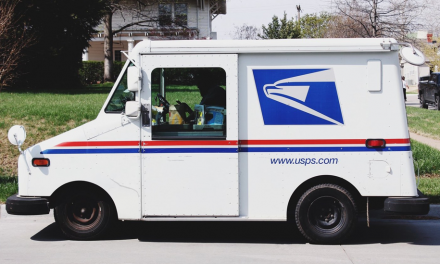
USPS still struggling to meet costs of monopoly services
The loss-making US Postal Service is still failing to recover its costs from operating various monopoly mail services. In particular, troublesome services like Standard Mail Flats have actually seen their cost coverages worsen despite regulatory requests and orders issued in past years requiring USPS to improve them.
The Postal Service, which is set to begin closing 82 mail processing plants across the country from this week in an attempt to improve its profitability, revealed its latest performance figures within this year’s annual compliance report.
The report tells regulators how well the Postal Service is doing in meeting the terms of US postal law.
The 29th December filing begins a public review process by the Postal Regulatory Commission, which will accept public comments on the USPS performance by 2nd February.
Cost coverage
There was some positive news within the compliance report, notably a slowing decline in important First Class Mail volumes. But, the report showed that the Postal Service is still unable to bring in enough revenue to support the costs of operating various services.
The regulator has been calling on USPS to cover the costs of its mail services since 2008, issuing a formal order for USPS to rectify the problem in 2010, and going through the courts in 2012.
Under US postal law, the Postal Service is supposed to cover its costs in providing monopoly services so that customers using one kind of service are not subsidising customers using a loss-making service.
The Postal Regulatory Commission rejected a USPS pricing proposal in 2012 because it said the Postal Service was not doing enough to raise rates to cover costs in services like Standard Mail Flats.
Standard Mail Flats has seen its cost coverage down 3.3 percentage points in the latest financial year, so that it is now covering only 81.6% of costs.
Standard Mail Parcels cost coverage improved from 64.3%in 2013 to 66.3% in 2014, but is still behind the 85.5% level of 2012 since service changes have seen a higher proportion of volumes from nonprofit mailers.
Periodicals cost coverage remained similar this year to last year’s levels at 76.1%.
The Postal Service said it will be proposing above-average rate increases in future in an attempt to improve the cost coverage of its loss-making services.
The difficulty for the Postal Service is that raising service prices in order to ensure they meet their costs could mean customers finding alternative service providers — thereby reducing mail volumes and revenues. USPS also faces an annual price cap for monopoly products linked to inflation.
Discounts
Elsewhere in this year’s report, the Postal Service states that it is providing continuing to provide discounts for customers supplying sorted mail that exceeds the costs avoided by those customers sorting their mail.
Six Standard Mail letters discounts exceed costs avoided, along with six Standard Mail flats discounts and five Standard Mail parcels discounts.
USPS said it was planning to eliminate portions of discounts that exceed cost avoidance “as soon as [is] practicable” through future price increases.
On a more positive note, USPS said the decline in First Class Mail volumes has continued to slow, from 6.6% year-on-year in 2010, to 3.3% in the 2014 fiscal year.
First Class Mail continues to make the highest contribution to the USPS bottom line, bringing in $28.9bn a year.
USPS told regulators it has also been improving on time delivery rates for monopoly products, although in some products “aggressive” targets of 90% on-time, or better, have not yet been met at a national level.
The Postal Service said surveys suggested 91% of residential customers were satisfied with First Class Mail services, compared to 94.67 last year. 87.25% of SME customers were satisfied with First Class Mail, compared to 93.21% last year. Standard Mail satisfaction was 86.76% among residential customers, compared to 85.11% last year, and 83.83% among SMEs, compared to 87.95% last year.
Losses
In its latest financial year, which ran until the end of September, the US Postal Service recorded a $5.5bn loss, although this included payments to the US government which USPS has been refusing to make because of its liquidity problems.
The year saw USPS achieving a $1.4bn operational profit when required federal payments for future healthcare liabilities were not included, compared to a $1bn operational loss in 2013.
Revenue grew by $569m in the year, to $67.8bn, with Postmaster General Patrick Donahoe describing the results as a “strong performance”.












